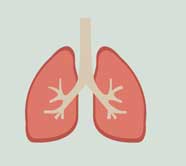Thoracic Outlet Syndrome Treatment

Get thoracic outlet syndrome treatment on the North Shore.
Patients on the North Shore seeking thoracic outlet syndrome treatment receive world-class, compassionate care at Salem Hospital, a member of Mass General Brigham. Thoracic outlet syndrome refers to a variety of disorders resulting from compression, injury or irritation of the nerves and/or blood vessels in the upper chest or lower neck area. Causes include tumors, stress, injury to the neck or back, poor posture, stress, weightlifting, sleep disorders, repetitive arm or shoulder movement, and injuries from carrying heavy shoulder loads. Symptoms include pain or numbness in the neck, shoulder and arm.
Thoracic surgeon Dean M. Donahue, MD, Chief of Thoracic Surgery at Salem Hospital, is an expert in thoracic outlet syndrome treatment. He holds joint appointments at Salem Hospital and Massachusetts General Hospital. North Shore patients of Dr. Donahue may receive treatment close to home at his Salem campus office, or they may choose to see him in Boston. His Salem number is 978.745.1581.
Non-surgical thoracic outlet syndrome treatment options
- Nonsteroidal anti-inflammatory medicine such as ibuprofen and naproxen to relieve the pain and reduce swelling.
- Physical therapy, including exercises to strengthen the muscles that support the collarbone and posture exercises to help the patient stand and sit straighter, lessening the pressure on the nerves and blood vessels in the thoracic outlet.
- Weight loss program to lose extra weight that may be stressing the shoulder muscles which support the collarbone.
- Changes to lifestyle, such as adjustments to a workstation, modifying daily activity or avoiding strenuous activity.
Surgical options for thoracic outlet syndrome treatment.
If a patient does not respond to non-surgical thoracic outlet syndrome treatment, surgery may be required. Thoracic outlet syndrome surgery options include:
- First rib resection and scalenectomy, in which cardiothoracic surgeons remove a portion of the first rib to make more room for blood vessels and nerves, or to repair any structural problems in the artery
- Cardiothoracic surgery to release a muscle that joins the neck and the chest, relieving the pressure on nerves and blood vessels in that area.
In some cases, patients may be eligible for video-assisted thoracoscopic surgery (VATS), in which a cardiothoracic surgeon uses instruments and a camera inserted through several small incisions to conduct the surgery. VATS surgery is less invasive, allowing patients to recover more quickly.



